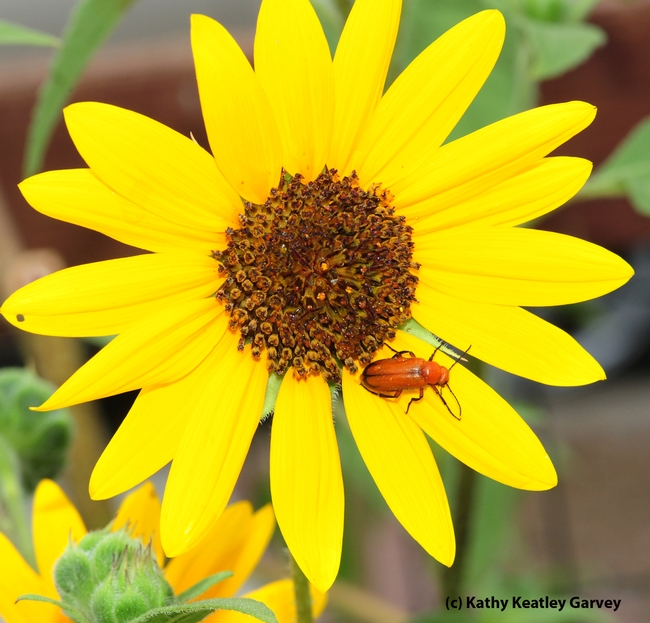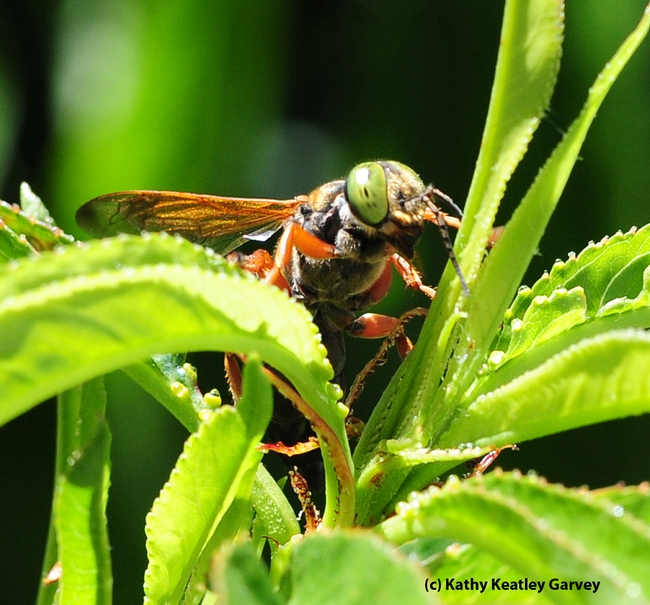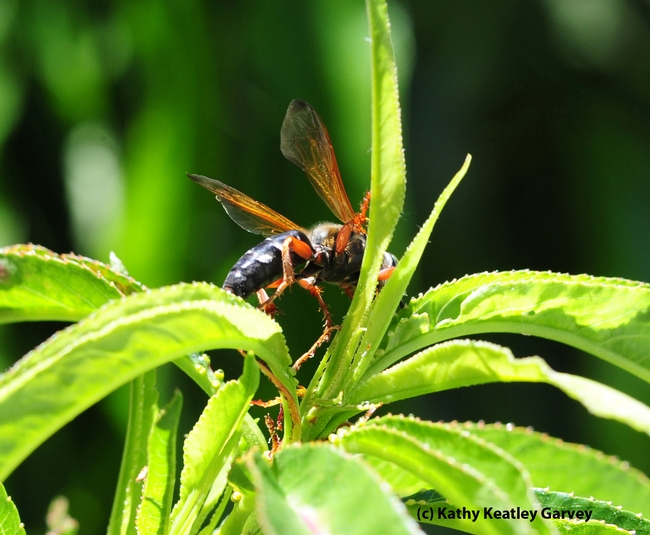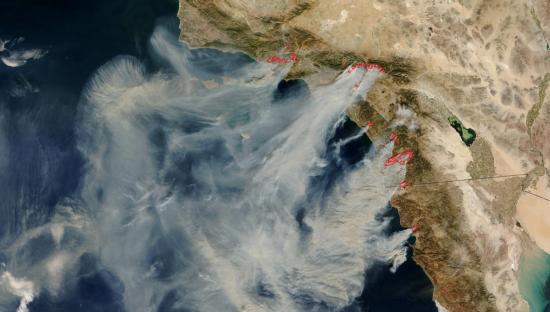UC Blogs
Independence Day Plant
Happy Independence Day to all, with a special thank you to all of those who made our Independence possible! It is a great day to celebrate our freedom, and one of my favorite ways to mark an occasion such as this is by planting something special in my garden. You’re in luck, as I know just the plant!
A few years ago, I found a beautiful plant at a nursery-a Shooting Star hydrangea, Hydrangea macrophylla ‘Hanabi’. This is a lace cap hydrangea of pure white, double, flattened flower heads shaped like a star. Very much like fireworks in your own garden! Like any hydrangea, you’ll need to plant it so that it is shaded from the hot sun and drying winds. They require frequent watering to keep it lush and beautiful, so you don’t want it to dry out. Plant in a slightly acidic soil that offers good drainage (if you have clay soil, you’ll want to keep it amended with compost). After 4 years, my plant is about 3’ tall and wide. However, they can grow to about 5’, so be sure to give it room to breathe and grow.
So go out and find a shooting star hydrangea and plant it to honor our forefathers!

Hydrangea macrophylla 'Hanabi' (photo from aquiya.skr.jp)
Caution: Toxic!
It was a reddish-orange beetle, moving a little but not a lot. We spotted it on a sunflower bordering the Avant Garden in Benicia. The garden,...

Meloid blister beetle, which produces a toxin known as cantharidin, peers at the camera. (Photo by Kathy Keatley Garvey)

Meloid blister beetle foraging on a sunflower. (Photo by Kathy Keatley Garvey)
Neem: A Biopesticide Tale
I am a vegetable gardener in the summer months. This year I am cultivating 3 varieties of tomatoes, string beans, chilies, peppers, and blackberries. I have traditionally had pest problems with white fly, aphids, mites, and caterpillars. There are probably other pests also but I have personally identified those specific ones in my garden. In the Master Gardener program, we researched the wonders of concentrated Neem oil and I thought I’d give it a try to rid my garden of the pesky insects. Neem is a natural vegetable oil made from compressing parts of the Azadirachta indica, a tree once primarily found on the continent of India. It is non-toxic to humans, mammals, and worms and is a very beneficial biopesticide often used in organic farming. The main active chemical found in Neem oil is Azadiractin, a repellant for almost all garden pests and diseases. Neem can help control black spot, powdery mildew, and rust in addition to repelling a large variety of insects. I have been using Neem in an air sprayer bottle by adding the concentrated Neem oil to a water solution and then applying it to the plant vegetation in the late evening after the sun has set. I have been strictly following the mixture concentration directions and I have noticed great results with almost a complete lack of pests, a 95% improvement from last season. I spray the solution over my crops about twice a week, I have found it isn’t real long lasting and needs to be periodically re-applied for best protection results. Neem can be used safely on fruits and vegetable and can even be applied on the day of harvest with no ill effects. (NOTE:Please be sure to read the label and follow the directions on how to apply Neem oil)

Neem tree flowers and leaves. (photo by TopTropicals.com)
Green-Eyed Gal
We saw her touch down in our nectarine tree last weekend. Big green compound eyes glowed at us. She moved up and down a branch, foraging for food,...

Green-eyed wasp, genus Tachytes, in a nectarine tree. This one is a female, as identified by Lynn Kimsey, director of the Bohart Museum of Entomology.(Photo by Kathy Keatley Garvey)

Green-eyed wasp, Tachytes sp., foraging on a nectarine tree. (Photo by Kathy Keatley Garvey)

A little somersault by a green-eyed wasp, genus Tachytes. (Photo by Kathy Keatley Garvey)
Wildfire season is upon us
I’m from San Diego. We don’t get a whole lot of extreme weather in San Diego. My comfortable temperature tends to range from 70 to 80 degrees. We don’t get snow, no hurricanes, no tornadoes. But we do get the Santa Anas—hot dry winds blowing out of the desert. Which means we get wildfires. I’m fairly familiar with wildfires. So much so, that I once mistook snow falling from the sky for ash falling from the sky. (Like I said, I’m from Southern California).
 Our last big fires were in 2007, when half a million people were evacuated from their homes, including myself. It was a scary time. In San Diego, we were surrounded. There were fires to the north, east and south of us, and the ocean to our west. There was no way out. So much of Southern California was up in smoke, satellite images made it look like the entire bottom half of our state was burning. For weeks after, we walked around wearing masks as the winds tried to make up their minds about which way to blow the smoke. At the time I worked for a social service program with a fairly robust wildfire recovery program, and I saw firsthand the damage the fires had caused for so many families.
Our last big fires were in 2007, when half a million people were evacuated from their homes, including myself. It was a scary time. In San Diego, we were surrounded. There were fires to the north, east and south of us, and the ocean to our west. There was no way out. So much of Southern California was up in smoke, satellite images made it look like the entire bottom half of our state was burning. For weeks after, we walked around wearing masks as the winds tried to make up their minds about which way to blow the smoke. At the time I worked for a social service program with a fairly robust wildfire recovery program, and I saw firsthand the damage the fires had caused for so many families.
Now, five years later, wildfire season is once again upon us, and conditions aren’t looking so good. California rainfall was below-average this year, causing our vegetation to dry out sooner than expected. When you mix that with the high temperatures being predicted for this summer, the threat for fire danger is high. The National Oceanic and Atmospheric Administration has already started putting out critical fire weather headlines for Southern California, and elsewhere in the southwest.
Help mitigate this fire season by making sure you’re prepared. UC Agriculture and Natural Resources has a wealth of information to help you mitigate the wildfire potential in your area and keep your home safe. The Homeowner’s Wildfire Mitigation Guide, The Combustibility of Landscape Mulches and Fire Information Engine Toolkit compiled by scientists from UC Cooperative Extension and UC Berkeley, are great resources for homeowners in fire-prone areas. The information will help you understand how houses ignite and what to look for when fire-proofing your home this season.
Landowners living in the wildland urban interface will find this S.A.F.E. Landscapes Southern California Guidebook useful for creating fire safe landscapes to help protect their homes. Likewise, Wildfire Zone, a collaboration between University of California Cooperative Extension and the County of San Diego, offers tips for reducing the risks and hazards of wildfires both in English and Spanish. More resources can also be found in the ANR Catalog.
Smokey says “Only you can prevent forest fires.” He’s right. Do your part, and make sure you’re prepared this wildfire season.

